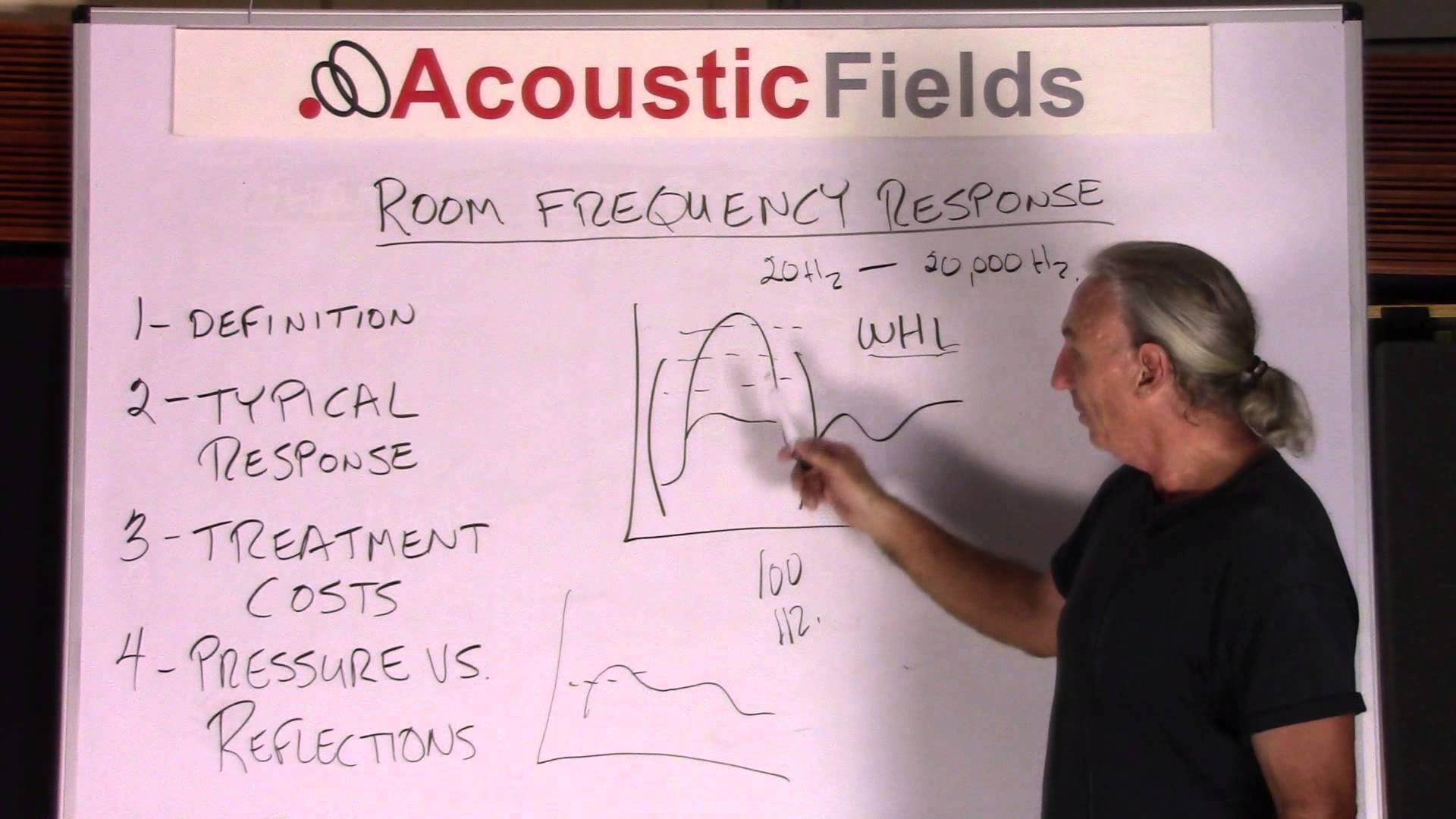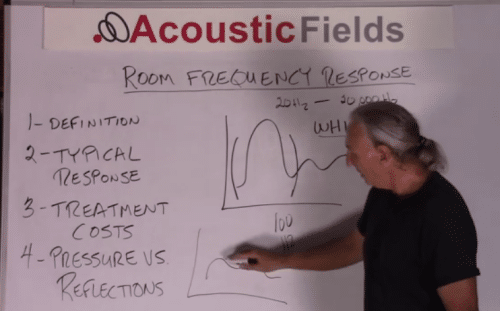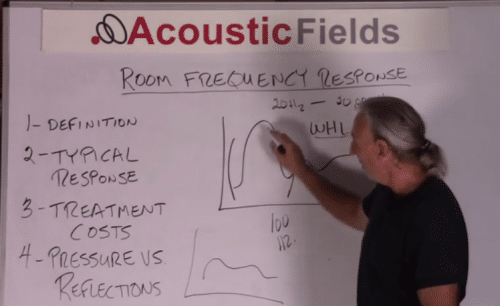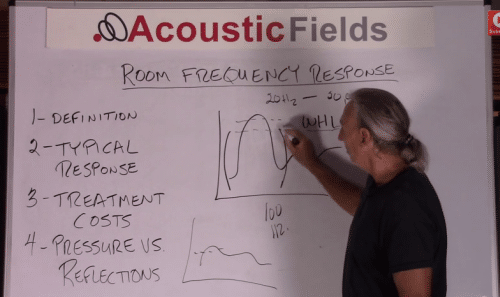Today we’re going to talk about how to understand your room frequency response measurement data. A lot of you send in your room dimensions and then what I do is I put those dimensions into our database and I actually generate a room frequency response for you because our database is all measured rooms there’s over 160 of them in there. We have updated this blog to reflect changes in how to measure room frequency response on 11/18/19. Let’s look at the definition.
Frequency Response Definition: https://www.acousticfields.com/room-frequency-response/
What is the room’s frequency response?
The room frequency response is the room’s ability to handle energy, that’s all it is. Energy from 20 hertz all the way up to 20,000. Let’s use that as our guideline. I mean there’s a lot of debate about that but for sake of discussion let’s use that as the two endpoints of the continuum. What do we see in today’s small rooms? We always see this big bump below 100 hertz and that’s just characteristic and typical of all small rooms. This bump is a direct relationship to the width, height, and length of your room. That’s why we’re always trying to get people to follow that width, height and length ratio that minimizes this issue. You can take a room that measures this way with this frequency response, change the width, height and length and get a new response that maybe is something like the following.
is way better than this:
And here’s why. For every 10% of this:
Waves and Rays
We must reduce pressure. The energy within our rooms comes in two forms. We have rays and rays. Waves are below 100 Hz. and rays are above 100 Hz. You must focus on these two types of energy. One is pressure-related like an ocean wave and one is ray science similar to sunshine. Pressure waves are long and tall. Rays are short and skinny. There is so much energy in above low-frequency bell curve which is creating so much distortion that there’s just too much you can’t hear and this is that low-end boom that everybody talks about and it’s throughout the room and spreads throughout the room at many frequencies.
Waves and Rays: https://www.acousticfields.com/waves-and-rays/
So we have to reduce it, we have to get it down to an acceptable level, every 10% reduction in this bump will result in about a 10% increase in sound quality. That said you need the proper treatments to minimize that bump. So the room frequency response is how the sound will fit in the room and if we choose the right width, height and length ratios we minimize the bump and that’s important because minimizing that bump reduces our treatment costs.
Peaks and Dips
The bigger the bump the more it’s going to cost to treat it and the more we’re not going to be able to get to a point where it’s going to be acceptable because low-frequency energy is about management, it’s not about a complete solution. Even the best of rooms, even in the most expensive of studios, will have some kind of low-frequency pressure issue that they did not see and they weren’t able to eliminate, so it’s all about management. Our goal is to reduce most of the room gain below 100 Hz. in the analog domain through room treatment and then polish up with signal processing in the digital domain.
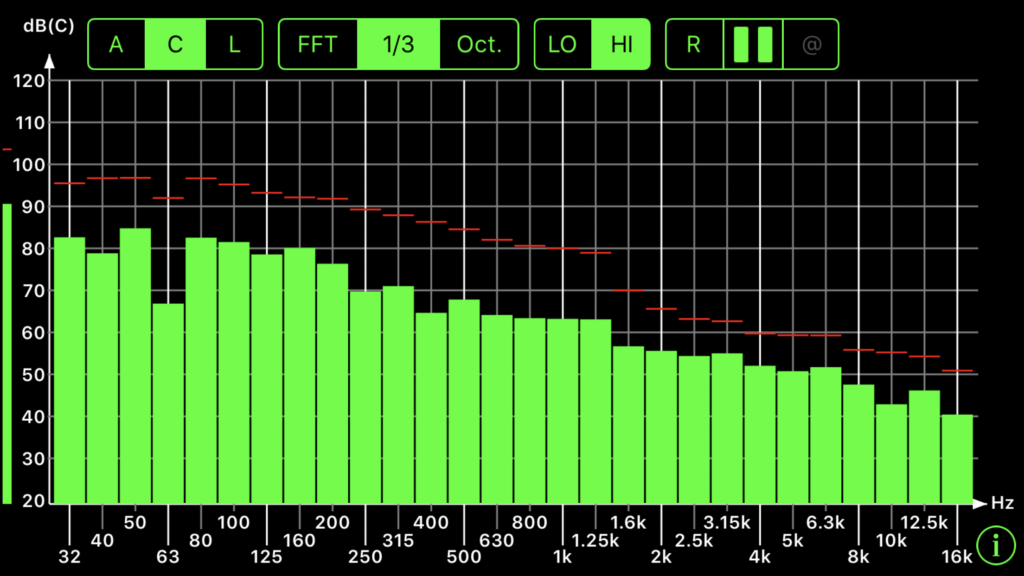
Octave Bands
The bigger the bump, you didn’t choose the right width, height and length dimensions for your room and don’t get me wrong, you’re always going to have this problem, but our goal is to try and reduce it in the beginning because good sound is a series of well-done things, a lot of little well-done things done in the right order. The first thing we want to do is choose a room that has the correct width, height and length that doesn’t have this huge bump on the low-end that impacts your room frequency response because every 10% of reduction and maybe a bump like this we have to reduce 50%, so that costs money and the money is in the form of the right kind of treatment.
Pressure Activated Technologies
You want to make sure that we address the treatment for this peak below 100 Hz. What is the treatment for this bump? It has to be pressure activated devices. Not foam, not boxes filled with building insulation, so-called (bass traps), not 4-inch deep products, not 6-inch deep products, you’re not going to get this energy, you’re not going to tame this with technologies that aren’t designed to do that. You must first choose the right width, height and length so you get the best frequency response that you can get in a room and then what you don’t get with room size and volume we have to treat and treatment costs money. When you learn how to measure room frequency response.
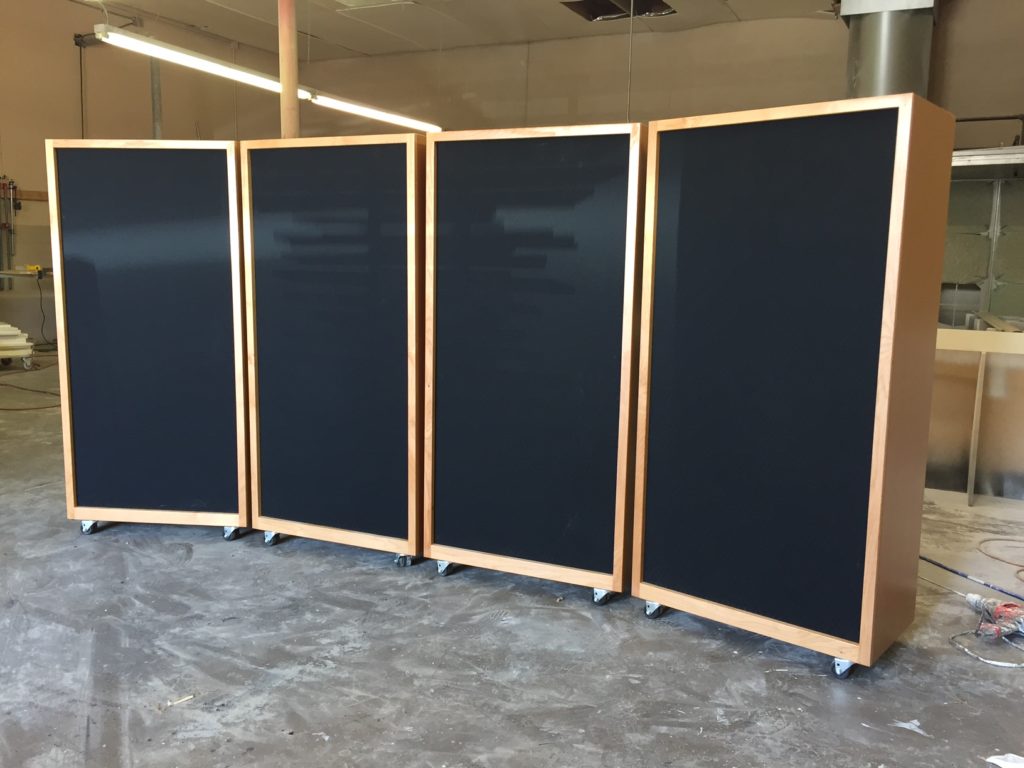
Diaphragmatic Absorbers
Diaphragmatic Absorption
The most powerful of all the low-frequency absorption technologies is diaphragmatic absorption. It is a pressure-activated technology that responds to those large pressure peaks below 100 Hz. Diaphragmatic absorption per square foot is the most powerful, weighs the most, and is the largest surface area of coverage in small rooms. Diaphragmatic absorption must cover at a minimum of two walls since it takes two walls to produce the strongest of all low-frequency issues which are the axial modes.
Diaphragmatic Absorbers: https://www.acousticfields.com/product-category/sound-absorption/acda-series/
In Summary
I hope this discussion helped. Feel free to contact me directly at: 520 – 392 – 9486 MST or info@acousticfields.com. If you would like to learn more about room acoustics please sign up for my free videos and ebook by joining the mailing list here.
Thanks and speak soon
Dennis


